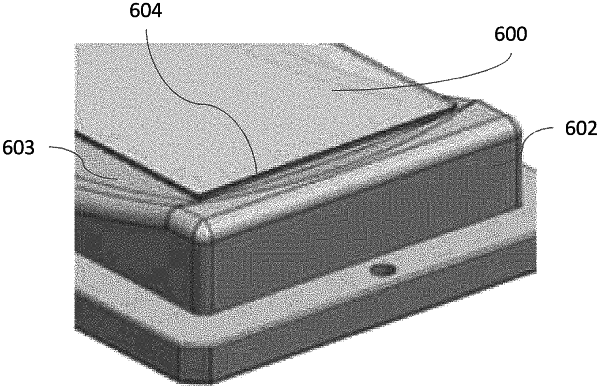| CPC C03B 23/0357 (2013.01) [B60K 35/00 (2013.01); G02B 5/10 (2013.01); G02B 27/0101 (2013.01); B60K 2370/1529 (2019.05); B60K 2370/81 (2019.05); C03B 2225/02 (2013.01); G02B 2027/013 (2013.01)] | 16 Claims |

|
1. A method of forming a three-dimensional mirror for a heads-up display (HUD) system, the method comprising:
providing a glass-based preform having a first major surface, a second major surface opposite to the first major surface, and a minor surface connecting the first and second major surfaces, the minor surface comprising first and second longitudinal side surfaces opposite to each other and first and second transverse side surfaces connecting the longitudinal side surfaces;
disposing the glass-based preform on a mold having a concave surface such that the second major surface faces the concave surface of the mold, and such that the first and second longitudinal side surfaces are adjacent to a longitudinal wall of a housing, the longitudinal wall extending from the concave surface to at least a height of the second major surface of the glass-based preform, wherein the concave surface comprises at least one opening for supplying a vacuum to a gap between the second major surface and the concave surface;
supplying a vacuum to the gap; and
conforming the second major surface to the concave surface of the mold using the vacuum, wherein the at least one opening for supplying the vacuum to the gap does not contact an effective area of the three-dimensional mirror,
wherein the first and second transverse side surfaces have a curved shape corresponding to a curve of the concave surface such that the first and second transverse side surfaces contact the concave surface when the glass-based preform is disposed on the mold in a two-dimensional shape and remain coincident with the concave surface during the conforming of the second major surface,
wherein the glass-based preform is not cut after the conforming.
|